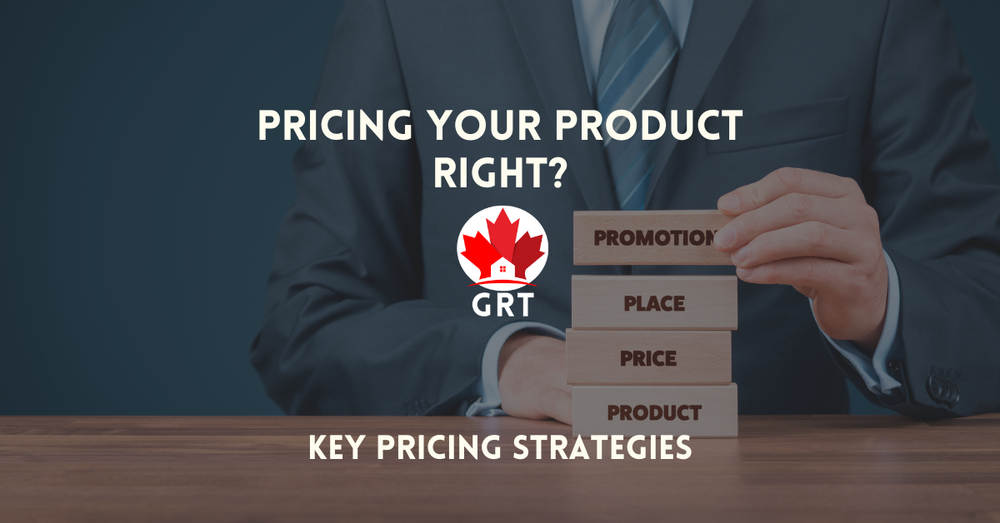Pricing Your Product Right? Key Pricing Strategies for business growth!

Adopting an ideal pricing strategy for a product is very essential to making a product succeed in the marketplace.
When a customer is looking to buy a product - they will mainly look at the value that particular product is going to bring to them. It often seems possible, that a product price turns customers towards buying or not buying a product.
As we know, price is not just a number and before we decide on it - we need to get a fair understanding of the product and arriving at an ideal price for a product is often quite challenging. We need to find a balance between the perceived value of the product and the actual cost of ownership while making sure - we do not lose out on potential customers.
An ideal price for a product indicates how much value our product is going to bring to the customers, it also indicates how much value our brand has and most importantly how we treat our customers.
Following are some pricing strategies that we can consider for pricing our products:
- Price Skimming Strategy
- Market Penetration Strategy
- Premium Pricing Strategy
- Price Bundling Strategy
- Freemium Pricing Strategy
Before we decide on a particular pricing strategy - we need to look at the following important aspects - which we need to understand before adopting a particular pricing strategy:
Goal: What is the goal of the company? What are they trying to achieve by launching the product?
Product: What is the product that we are trying to sell? What are the product features? How our product is going to solve a customer problem? What is the problem our product is solving for the customers? What is the problem that is a problem for the customers? How are we going to help the customers get over that problem with our product?
Customer: Who is the customer? Businesses should find ways to closely understand their customer - if possible - it will always be helpful to define the customer persona. By knowing about our customer persona - we will know - whom we need to potential target and price the product in a manner that is more acceptable.
Customer Willingness: When we are deciding on the price - we should also look at the aspect that helps us understand - whether or not a customer is willing to pay a certain price for the product. If the customer perceives that the product is giving them value by solving the problems or challenges they are looking to solve - then it becomes easier for the businesses to price their product at a certain level.
Market Positioning & Brand: Is our product unique and if yes, in what aspect? Do we have any competition in the market? Is it going to be a blue ocean strategy - wherein we are trying to create and capture uncontested market space and thereby make the marketplace irrelevant?
Most importantly - business owners should focus on giving value to customers in order to differentiate themselves from others. Once we have identified and understood the various key aspects listed above - and they need to choose a pricing strategy that is most appropriate for them. Following are some popular pricing strategies that can be considered:
Price Skimming Strategy: Under this pricing strategy, we will first price a product at a very high price initially and as we progress forward - we reduce the product price to enable more customers to buy our product. This approach is more prominently seen in the case of mobile phone pricing strategy by telecom operators.
Market Penetration Strategy: In this approach, our main goal is to reach the market quickly and price our product very low - we can make the product affordable and accessible for many customers from the start. This approach will possibly help us get to as many people as possible and help us scale the market reach easily.
Premium Pricing Strategy: This pricing strategy is most suitable - if our product or brand has already have got a strong positioning in the market. If that is the case, then it becomes easier to price the product appropriately based on the circumstances. For example, brands like iPhone or Porsche demand a price as they are perceived as premium by the target customers. It is the brand value that is giving extra leverage in demanding a certain price for the product. These products are often termed aspirational products.
Price Bundling Strategy: In this bundling strategy, we are actually bundling the products together and it is often perceived as more value for the price paid by the customers. This way, businesses can try to bundle new/unpopular products with top-selling products and thereby creating an opportunity for those products to get accepted eventually by the customers. We see this approach more frequently used by companies like Amazon and Google.
Freemium Pricing Strategy: This approach is ideal for SaaS products - wherein the companies offer a basic version of the product for free - and by creating a value perception among the target customers - they try to convert them into paid customers by making them get used to their product.
Final Thoughts:
In order to stay competitive and relevant in an era of widespread connectivity, customer exposure, and market reach - businesses need to look at ways to price their products right?
Through this article, I tried to articulate different pricing strategies that can be followed by businesses of all sizes. By ensuring that businesses are able to create a perception of value among the target customers, they will be able to demand the desired price for their product.



